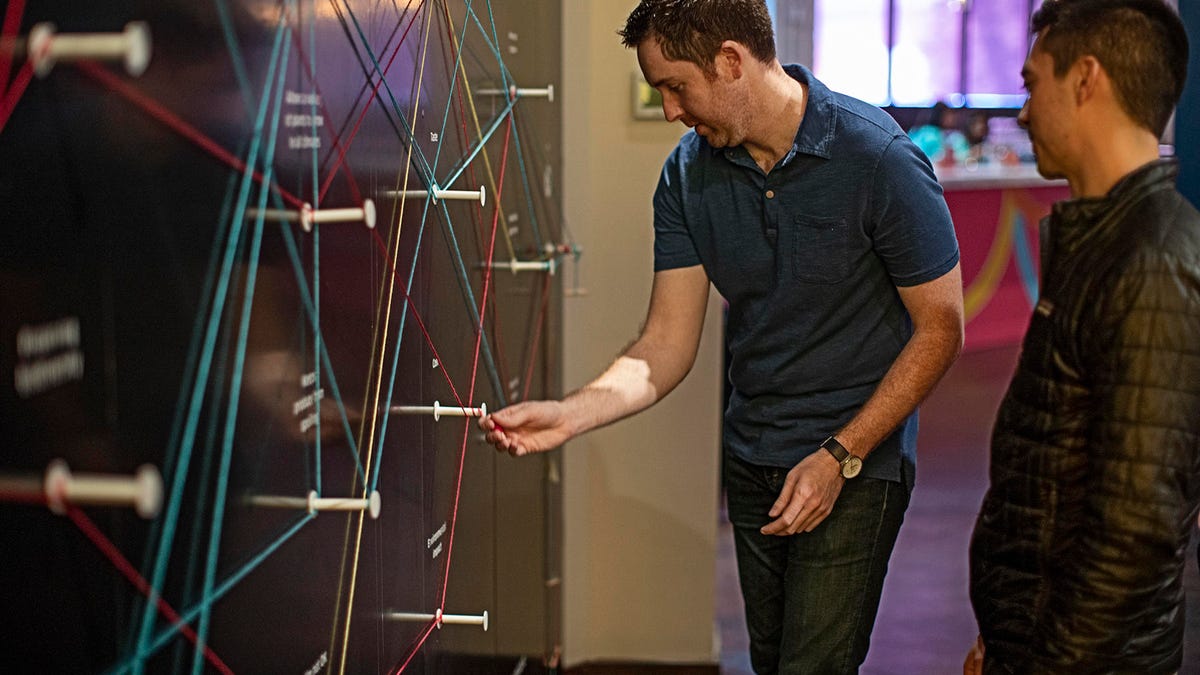Land O'Lakes' Copernicus Project: Humans aren't the center of the food universe
At SXSW, an interactive art installation comes with lessons on biodiversity and food science.

The Copernicus Project reminds SXSW attendees they're not the center of the food universe.
At an interactive experience called The Copernicus Project by Land O'Lakes, South by Southwest festivalgoers got some food for thought.
Tying art installations into topics like biodiversity and nanotechnology meant that attendees could stand inside a room with floor-to-ceiling LED screens to get facts about where our food comes from, or slide into a giant avocado ball pit while pretending to be a nanobot.
"People learn when they touch things," said Land O'Lakes CTO Teddy Bekele.
The thinking behind the name of the installation, which ended Sunday night, comes from the idea that Nicolaus Copernicus said the Earth wasn't the center of the universe. Similarly, Land O'Lakes wants folks to know humans aren't the center of the food universe.
In the middle of a sprawling conference and festival like SXSW, Land O'Lakes is also one of many companies vying for the attention of folks looking for the next, large, colorful, interactive experience to duck into and maybe even snap some pics for Instagram.
The Copernicus Project also let goers do things like see how they stack up in their perceptions of food issues. For example, they could take a small spool of yarn color-coded to their diet (vega, carnivore, omnivore, etc) and wrap it around pegs in order to indicate how much they think the average meal costs, or what the most pressing food challenge is: Scarcity? Food safety? Global hunger?
And if attendees would consider adding bugs to their diet as a protein source, for example, they could have voted with a small yellow plastic ball.

